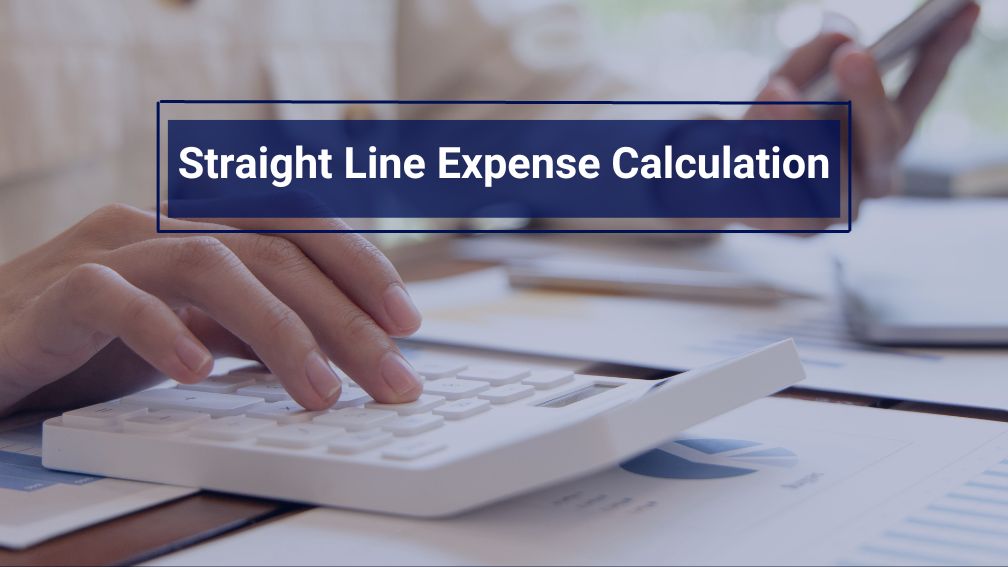What is Straight Line Expense and How To Calculate It
Last Updated on May 3, 2023 by Morgan Beard
Straight line expense, also known as the straight line depreciation method, straight line basis, or simply the straight line amortization method, is a depreciation formula for amortizing or depreciating business assets. Straight line expense is the easiest way for accountants to track an asset’s lost value over time. Calculating the expense is simple: subtract the asset’s salvage value from its original cost, then divide that by the expected number of years of use. This is an asset’s useful life calculation.
Straight line expense key takeaways:
- An easy way to depreciate or amortize an asset’s value from its purchase date to the end of its useful life.
- This Allows the business to stretch out the asset’s expense longer than other depreciation methods.
- To calculate, subtract the asset’s salvage value from its original cost, then divide that by the expected number of years of use. This makes for the fewest calculation errors.
- Because the straight line method is easily understood and a simple calculation, it’s one of the most popular expensing methods—but it can pose disadvantages.
- Alternative depreciation methods typically require an accelerated depreciation schedule.
The Basics of the Straight Line Method
Accounting has various rules, or generally accepted accounting practices (GAAP), meant to align income and expenses with the reporting period they occur in. One such principle companies adhere to is amortizing and depreciating assets appropriately. Which expense method you use depends on the type of asset.
For instance:
- Any asset you can physically use, known as a physical asset, is expensed through depreciation. Examples include office equipment and fleet vehicles.
- Any asset you can use but that does not have a physical nature is considered an intangible asset and is expensed through amortization. Examples include software and patent rights.
Both depreciation and amortization are used when expensing the residual value of an asset over a period of time longer than the period in which you purchased it. The entire useful life of the asset has a depreciable cost that is amortized in your journal entries in order to build your balance sheet. For example, a fleet vehicle has a likely lifespan of around 10 years, so its expense can be divided over the next 10 years and not reduce the company’s net income for the period in which it was leased.
Calculations Using the Straight Line Expense Method
Figuring out how much should be expensed per period is the challenge. One of the more popular expensing methods used by accountants is straight line expense. Calculating straight line expense is as follows:
Purchase price of asset – salvage value
Number of useful years
In this calculation, salvage value refers to how much the asset can be sold for once it’s no longer needed. Number of useful years is also known as useful life.
Straight Line Expense Example
Say you buy a new piece of equipment for your factory that costs $10,000 and you can expect to use this equipment for the next 10 years. At the end of the 10 years, the equipment will have a salvage value of $250. With the straight line method of depreciation, you perform the calculation listed above:
10,000 (purchase price) – 250 (salvage value)
10 years (useful life)
So, the company doesn’t need to expense the entire $10,000 against the company’s income for the period in which the equipment was purchased, and can instead simply expense $975.
This amount is entered in Accumulated Depreciation each period until the salvage value ($250) remains.
Pros and Cons of the Straight Line Expense Method
Accountants prefer straight line expensing because it’s simpler. It helps ensure there are fewer chances for errors throughout the asset’s life because the same exact amount is expensed each period.
But this simplicity is also one of this method’s greatest weaknesses. The most obvious drawback of this expensing method is that the useful life of the equipment isn’t calculated, it’s just a guess. For instance, if the equipment is a computer or some other tech device, it’s highly likely that advancements could make this equipment obsolete in just 2 to 5 years. The straight line method doesn’t account for accelerating depreciation or how, as the equipment ages, it may require maintenance.
Straight line expense is, however, the most streamlined method for depreciation calculations when an asset’s value is expected to decrease at about the same rate over its useful life, and knowledge of its useful life is generally accepted.
Calculate Your Expenses with Occupier
At Occupier, we want to ensure you have all the information you need to make the best decisions for your company. We offer comprehensive training on lease accounting and can offer support throughout the entire process. Are you ready to see how Occupier can streamline your entire accounting lifecycle? Reach out today and schedule a demo.
